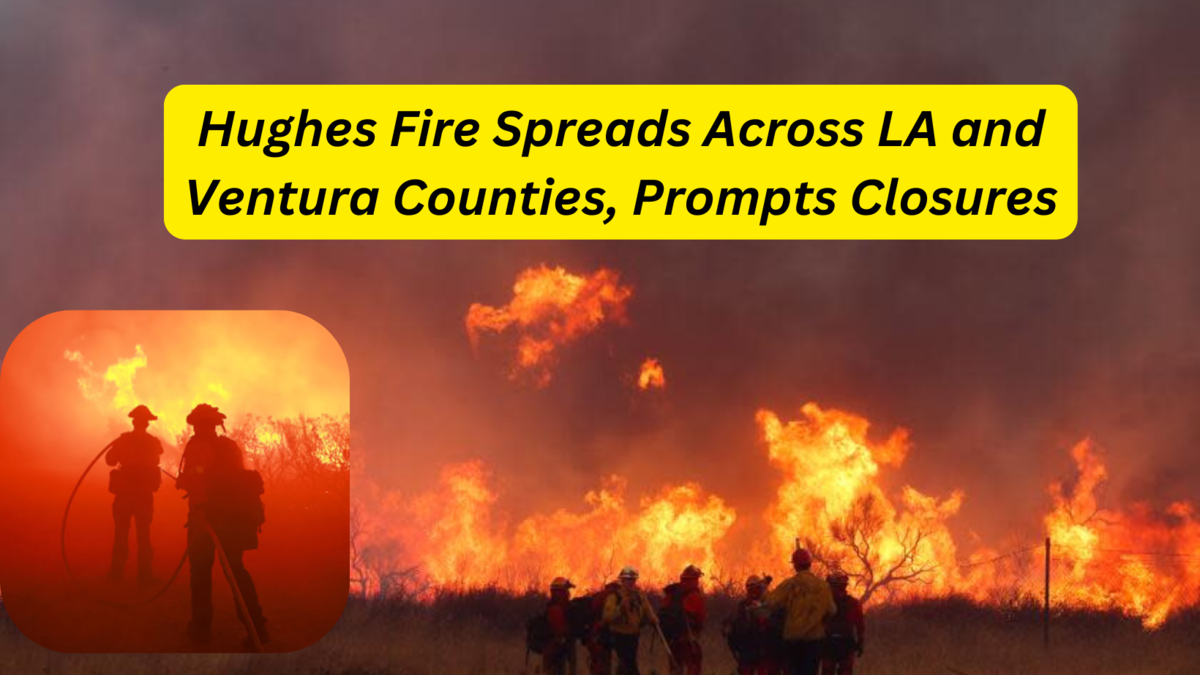Hughes Fire Sweeps Across LA and Ventura Counties Prompts Closures: A rapidly expanding wildfire near Castaic, California, has scorched 10,176 acres and is only 14% contained as of Thursday morning. The fire, fueled by relentless Santa Ana winds and bone-dry conditions, has disrupted thousands of lives across Los Angeles and Ventura counties.
What You Need to Know
- The Hughes Fire has led to mandatory evacuations affecting 31,000 people, with an additional 23,000 under evacuation warnings.
- While some evacuation warnings have been downgraded, many communities remain on edge as shifting winds threaten containment efforts.
- The fire ignited Wednesday morning along Lake Hughes Road, near Castaic Lake, and continues to grow rapidly due to dry vegetation and intense wind patterns.
- Elsewhere, the Sepulveda Fire near UCLA was quickly contained to 40 acres after brief evacuation warnings, while several other fires rage across Southern California.
A Human Rights Perspective: The Cost of Wildfires on Vulnerable Communities
Wildfires do not just destroy property; they disrupt lives, displace families, and disproportionately affect the most vulnerable members of our communities. The 31,000 people forced to leave their homes due to the Hughes Fire are facing immediate challenges—many do not have access to alternative housing, financial resources, or even adequate health support.
Emergency shelters, like the one set up by the Red Cross at the College of the Canyons, provide critical relief. These shelters offer safety, food, and water to evacuees, but they also highlight the fragility of our infrastructure when disaster strikes. For families living paycheck to paycheck, losing even a few days of work can have long-term consequences.
The Bigger Picture: California’s Fight Against Fire
California’s fire season seems to have no end in sight. Currently, firefighters are battling several significant blazes, including the Palisades Fire (23,448 acres burned, 72% contained), the Eaton Fire (14,021 acres burned, 95% contained), and now the Hughes Fire (10,176 acres burned, 14% contained). Each fire stretches the state’s already overburdened resources.
Imagine being a firefighter working back-to-back shifts, knowing that more fires are likely on the horizon. For them, it’s not just about battling the flames; it’s about ensuring that evacuees have a chance to return to their homes safely. For residents, the impact of these wildfires is deeply personal. In 2021 alone, wildfires caused an estimated $10 billion in damages, underscoring the financial and emotional toll.
Impact on Schools and Communities
The Hughes Fire has also disrupted education for thousands of students. On Thursday, the Castaic Union School District closed all schools, while the William S. Hart Union High School District shut down several campuses, including Castaic High School, Valencia High School, and Rio Norte Junior High School, impacting 21,000 students.
In a statement, the Hart district emphasized their commitment to student safety, saying, “We will continue to work with fire officials to monitor the situation and adjust as needed.” Other districts, like the Saugus Union Elementary School District, also closed schools, affecting families who now must juggle childcare while dealing with evacuation orders.
How Tools and Technology Can Help in the Fight
In these challenging times, technology can play a pivotal role in increasing productivity and improving disaster response. Tools like real-time satellite imaging, predictive AI models, and weather monitoring systems are helping firefighters make faster, data-driven decisions. For instance, apps like “Watch Duty” allow residents to track fire movements and evacuation zones in real time, reducing panic and misinformation.
As someone who has experienced the anxiety of wildfire evacuations firsthand, I know how critical these tools are. Imagine being able to open an app and see exactly where the fire is, how far it is from your home, and which roads are safe to take. This kind of clarity can save lives.
Even beyond firefighting, productivity tools can help affected communities recover faster. For example, local governments can use cloud-based platforms to coordinate relief efforts, allocate resources efficiently, and keep evacuees informed. Businesses can use these tools to continue operations remotely, ensuring minimal economic disruption.
The Human Element: Stories of Resilience
Behind every wildfire statistic is a story. One evacuee shared with me how her family of five packed up their lives in under an hour when the evacuation order came. “We didn’t know if we’d have a home to come back to,” she said, her voice shaking. Stories like these remind us that while fires may rage on, the human spirit often rises to meet the challenge.
Conclusion: Turning Crisis into Opportunity
As the Hughes Fire continues to burn, it’s a stark reminder of our shared responsibility to build more resilient communities. Whether it’s investing in better infrastructure, adopting cutting-edge technology, or simply offering support to neighbors in need, there’s always a way to turn crisis into opportunity.
If you’re in an evacuation zone, stay safe, stay informed, and don’t hesitate to reach out for help. And if you’re looking for ways to contribute, consider supporting local organizations that provide wildfire relief.
Together, we can face these challenges and come out stronger on the other side
